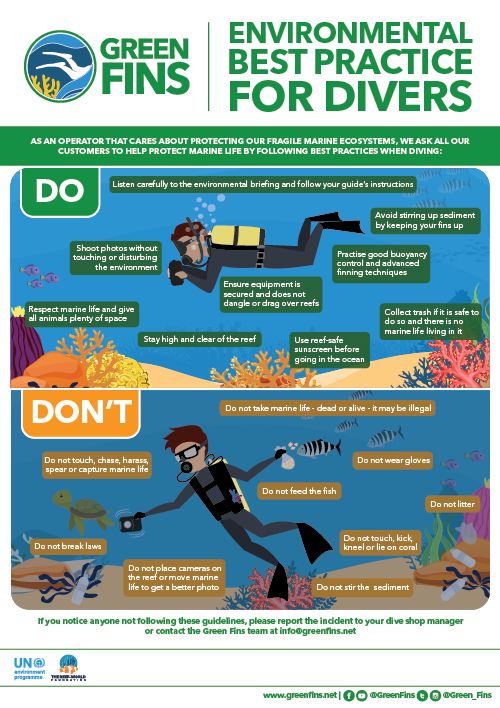Sustainable Diving Practices
DIVING BEST PRACTICE
Did You Know?
Sustainable definition: “causing, or made in a way that causes, little or no damage to the environment and therefore able to continue for a long time.”
So you know the environmental implications of poor diving, you’ve planned the dive according to your customer’s skillset and given them fantastic boat and pre-dive briefings, now it’s time to get your divers into the water!

Here are some ways to be a good role model for your guests:
- Keep a safe distance away from the seafloor.
Even if you are an experienced diver and are able to swim close to the reef without touching it, your divers may not have the same skills. Staying away will ensure that you don’t kick up any sediment either.
- Act calm around wildlife.
Do not chase or touch any marine life during the dive, and definitely don’t rest against the seafloor.
- Where safe and possible without causing further damage, collect plastic and other marine debris.
If it is stuck, leave it. You might cause more damage than you are trying to prevent if you don’t have much time. You can always make a note that it could be a future underwater cleanup site.
Take a look at the other best diving practices below (and don’t forget to download a copy!):
Finning techniques
Impress your divers by changing your finning techniques to more environmentally friendly versions. Flutter kicks are a fast way to get around, but it does pose more risk of accidentally kicking delicate corals. Have a read of the three environmentally friendly finning techniques and then get practising!

Did You Know?
The frog kick not only is more environmentally friendly than flutter kicks but also takes a lot less effort to do, so uses up less air. Tell your divers that they can save the reefs and have longer dives!

